The Samsung Galaxy Note7 (S820) Review
by Joshua Ho on August 16, 2016 9:00 AM ESTSystem Performance
As previously mentioned this year a major goal of ours was to focus on benchmarks with metrics that better indicate user experience rather than being subject to additional layers of indirection in addition to updating our previously used benchmarks. Probably one of the hardest problems to tackle from a testing perspective is capturing what it means to have a smooth and fast phone, and with the right benchmarks you can actually start to test for these things in a meaningful way instead of just relying on a reviewer’s word. In addition to new benchmarks, we’ve attempted to update existing types of benchmarks with tests that are more realistic and more useful rather than simple microbenchmarks that can be easily optimized against without any meaningful user experience improvements. With that said, let's get into the results.
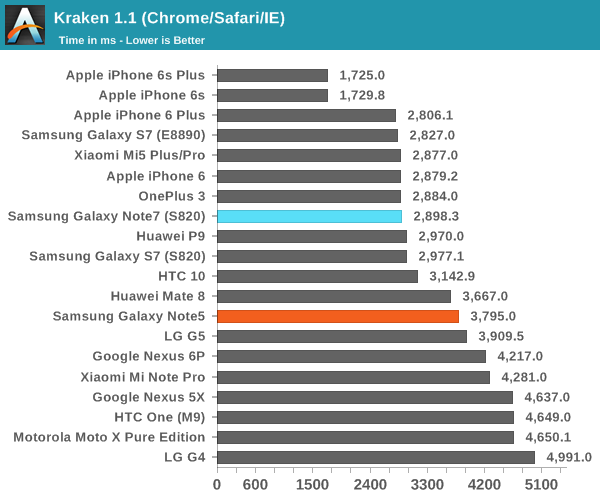
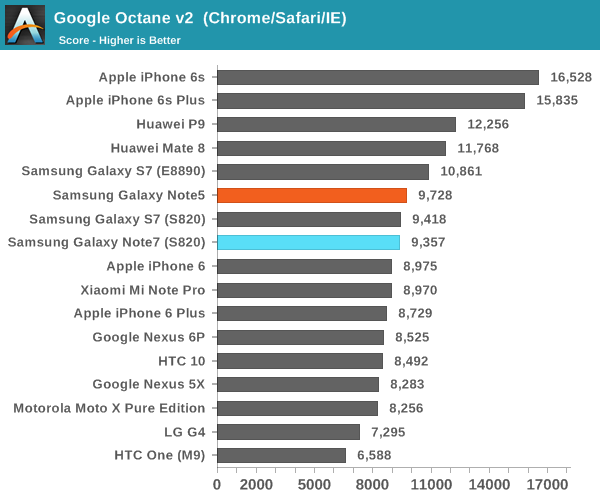
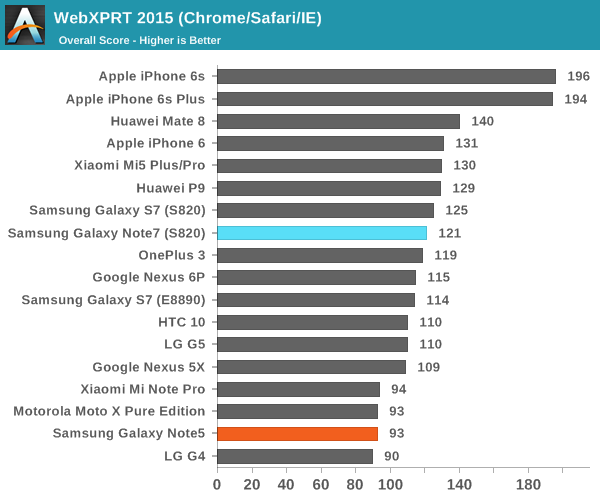
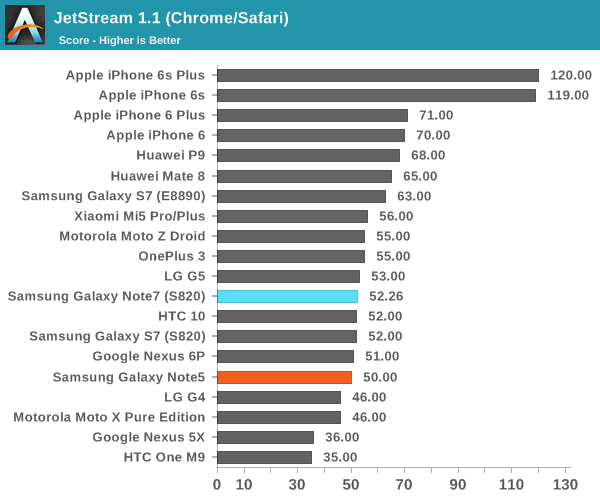

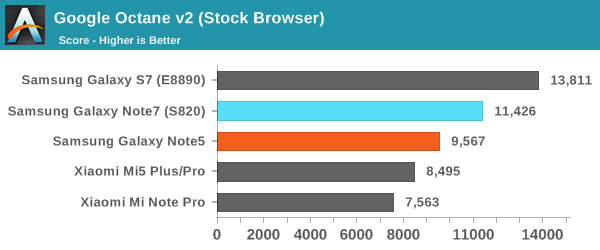
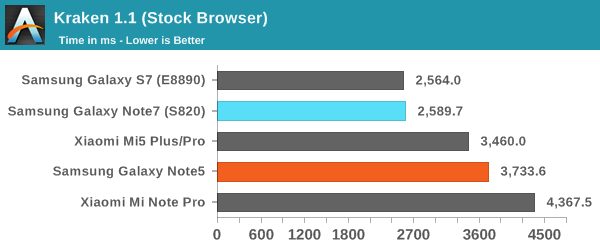
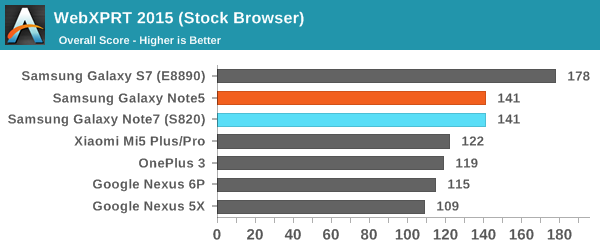
Browser performance here is pretty much in line with expectations as pretty much every OEM using Snapdragon 820 is going to be using the same basic BSP and most of the optimizations here are going to be done by Qualcomm rather than the OEMs.
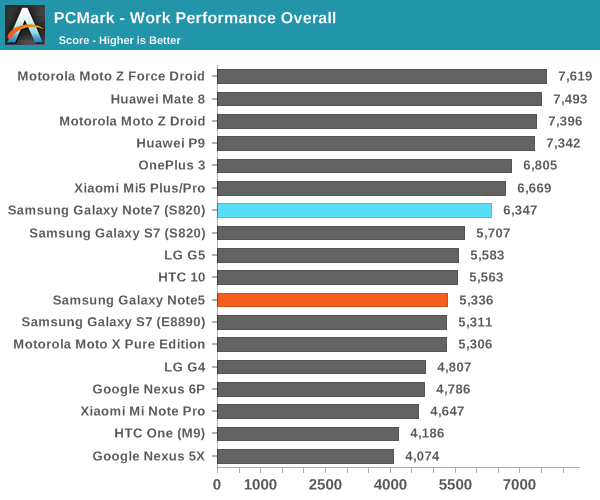
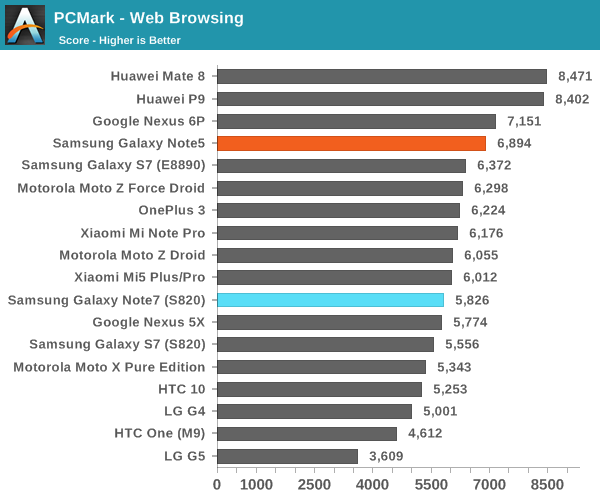
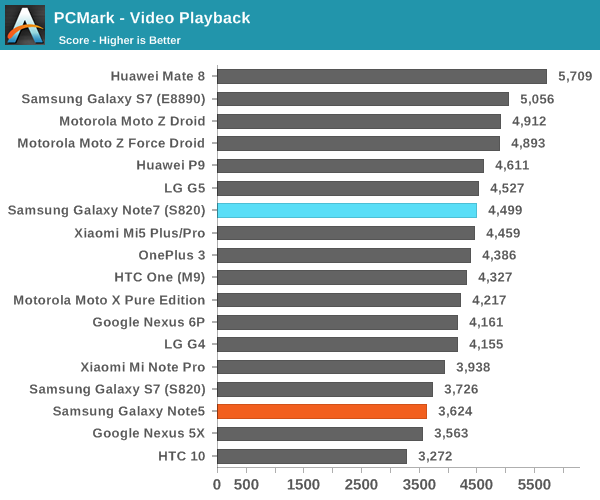
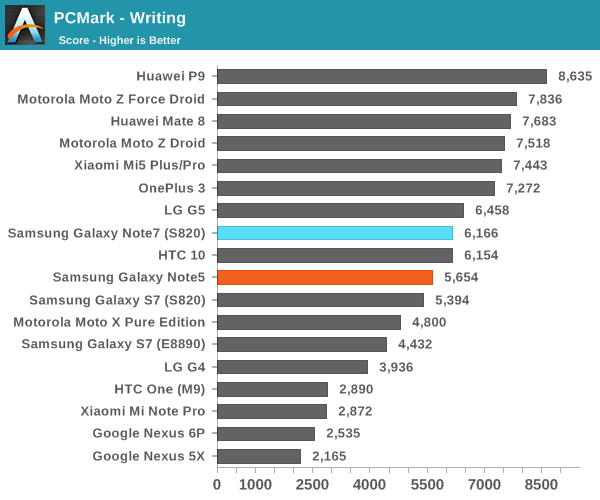
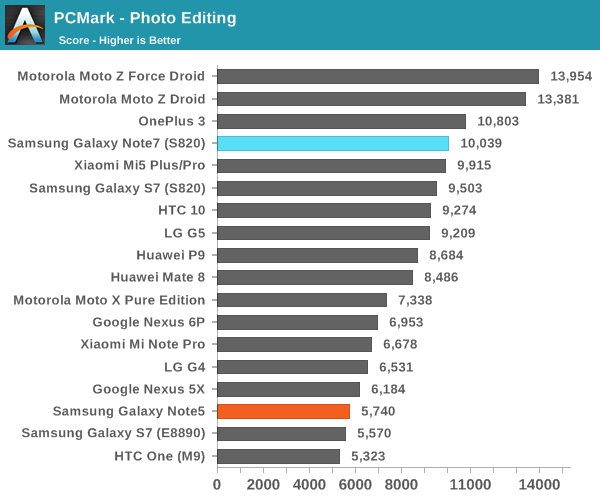
Again, performance is in line with expectation in PCMark, although there are some improvements here and there that are primarily centered about web browsing performance which is almost constantly being improved as developers figure out new optimizations for browsers. With that said we can move on to Discomark, which is a true high level benchmark designed to show exactly how quickly a suite of common Google and OEM applications load from NAND or from RAM.
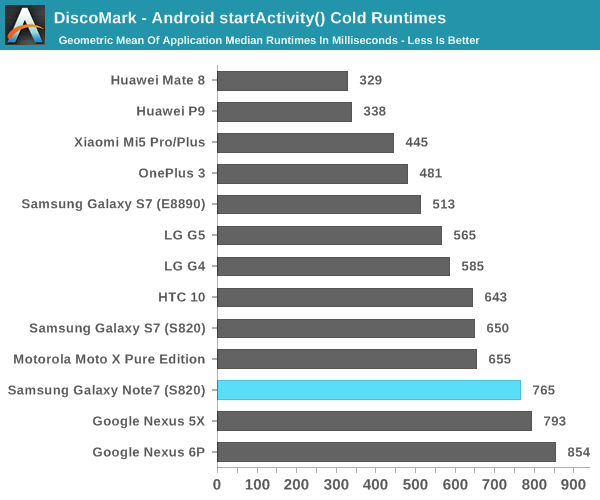
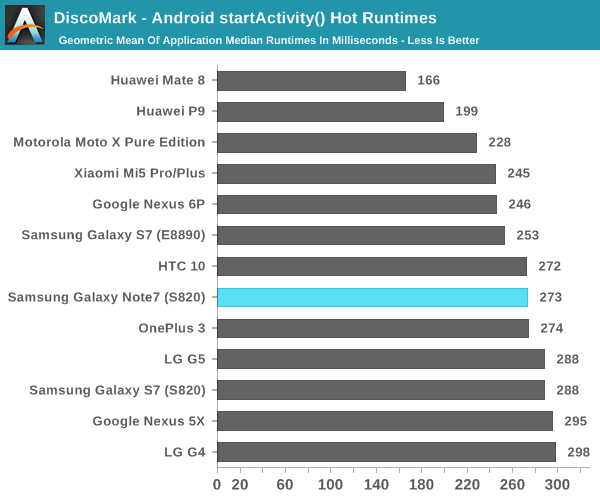
Here the Galaxy Note7 shows some improvement on hot runtimes relative to the Galaxy S7, but the cold runtimes have dropped for some reason. It looks like much of the delta here is due to Dropbox which is now running significantly slower on the Galaxy Note7. I suspect that this is related to possible changes in Dropbox or its interaction with TouchWiz rather than any significant underlying difference in system performance relative to the Galaxy S7. Overall, the Galaxy Note7 performs about where you'd expect from a Snapdragon 820 device from Samsung given the performance of the Galaxy S7.












202 Comments
View All Comments
lilmoe - Tuesday, August 16, 2016 - link
SD820 has the power more fluidly? Yes. Better than Exynos? Ummm... No.If you want smoother UI and better touch response, root and change the governor to Performance, or Ondemand.
lilmoe - Tuesday, August 16, 2016 - link
I've dug a little deeper into this after I bought my GS7e (Exynos). Looks like Exynos (and it's higher count of cores) plays better than the Snapdragon with the Conservative Governor that Samsung employs to save battery life. You can manually switch it to Ondemand, Interactive, or even better, Performance (eliminating most of the UI performance differences, and increase the responsiveness of the device drastically). But battery life would take a major hit, just like every other Android device with a 1440p screen.What needs to fixed and optimized is ANDROID. Google still insists on doing a crappy job with their OS, just like with their browser.
lilmoe - Tuesday, August 16, 2016 - link
"What needs to fixed and optimized is ANDROID. Google still insists on doing a crappy job with their OS, just like with their browser."What also needs to be fixed is the "higher resolutions screen is better" mentality. No smartphone should have more than a 1080p panel for optimal performance and efficiency.
There's absolutely no mention of the new power saving features that the new version of TouchWiz employs; like scaling down the resolution and how much more battery life you get out of that. Guess I'll have to test it myself when my GS7 gets the update. I'm soooooooooooooooooooooo scaling back the resolution to 1080p while leaving processing power intact.
InspectHerGadget - Wednesday, August 17, 2016 - link
Yes. The extra screen resolution is not worth the hit on battery life. Android and Samsung are also both to blame for poor optimisations. I had the Nokia 1520 which had great battery life, then the Note 5 which had only so so battery life, now the iPhone 6S Plus which has great battery life. On the Note 5 if I left the hotspot on it would get hot and drain the battery even when my Microsoft Pro 4 was in its case. I just felt too many rough edges on Samsung phones I had.jospoortvliet - Thursday, August 18, 2016 - link
Remember, guys, amoled isn't hit by lower efficiency on higher resolution, that is only an LCD problem. Now granted the gpu and cpu have to work a little harder but 1080P wouldn't look nice with pentile and Samsung does pentile to get a better endurance/longevity and brightness out of AMOLED. I don't think they made the wrong choice here. And yes, 1440P on an LCD is stupid.lilmoe - Tuesday, August 16, 2016 - link
Sorry, the governor they use is Interactive, not conservative...jospoortvliet - Thursday, August 18, 2016 - link
Then it shouldn't be an issue and if it is - they shold fix the governor not switch to performance. The performance governor is barely faster at big costs.lilmoe - Thursday, August 18, 2016 - link
It doesn't act like an Interactive governor would act at all, it's very slow to ramp up clock speed, and most ramps up the little cores. It's a good thing for battery life, but not as good for fluidity.jospoortvliet - Thursday, August 18, 2016 - link
IMHO the on demand governor should really not be costing battery life. It was designed to be a good balance and it generally is, at least on desktop.Then again with such an outdated kernel with patches who knows what is in there... wish the android vendors would get their stuff up streamed more timely...
grayson_carr - Tuesday, August 16, 2016 - link
It's a conscious decision happening at Samsung. They could tweak the kernel / governor configuration so that there are almost no frame drops and slowdowns, but it would come at the cost of battery life. Samsung is aiming for the minimum performance they think their users won't be annoyed with in order to maximize battery life, which Samsung assumes is more important to the average user. Google on the other hand configures their devices so that they maintain 60 fps in most scenarios, and their battery life suffers for it. I personally prefer Google's approach because I value a smoother and stutter free UI more than a little extra battery life, but I think a lot of people who buy Nexus devices are baffled as to why the battery life isn't as good as their Samsung phone even though the battery is just as large. Those people may prefer battery life over the smoothest UI possible.